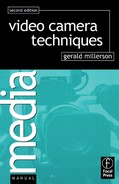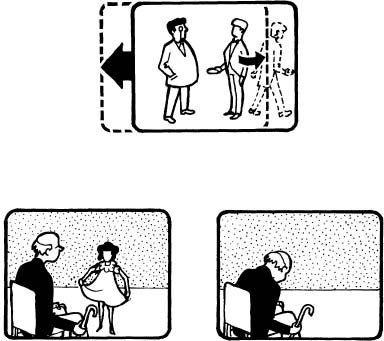As people move around, or the point of interest in the picture changes, you normally need to reframe the shot to compensate. This might involve little more than a slight tilt to correct the headroom, or a simultaneous pan-tilt-zoom to tighten on a single person within a group shot.
The most successful camerawork always looks as if it has developed quite naturally from the action itself. If you alter the shot by reframing, tilting, panning, zooming or dollying on a motionless subject your audience will be aware of the change immediately. But make these adjustments while the subject itself is moving (even a head turn will do), and the camerawork will still be effective – but quite unobtrusive.
If a person in a close shot is joined by someone else, there is obviously not room for them both without crowding the frame. So directors will often cut at that point to a wider two-shot shot. But what if there isn’t a second camera, or this cut would interrupt the visual flow? The solution is to zoom out (or dolly back) as the newcomer enters the frame, while panning over slightly to offset the first person.
When someone walks out of a shot, you have three options:
• To center up on whoever remains – Panning away from the person exiting, to rebalance the picture; a smooth, quick and unhesitating action.
• To move in before they exit – At the end of a sequence, the camera can move in to a speaker; excluding the second person who leaves when no longer seen.
• To hold the frame still – Here you just let them move out of frame, and continue to hold the shot. This deliberately leaves the shot temporarily unbalanced, emphasizing their departure.
Trying to hold a very tight shot on a fast or randomly moving subject, is a recipe for disaster! Sometimes it can’t be avoided of course … and might just come off! However, even when the action is fairly predictable – such as someone on a swing or a rocking-chair, the result is usually not all that rewarding. Frame-chasing tight shots are tiring to watch, particularly if the subject keeps passing out of the frame. It is better to widen the shot, so that movements can be followed more accurately.
Adjustment
As people enter or leave the frame, you should normally readjust the framing.
Held frame
Sometimes a dramatic point is made by deliberately holding the frame still after an exit, to emphasize someone’s departure.

